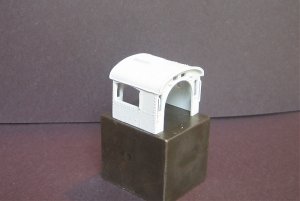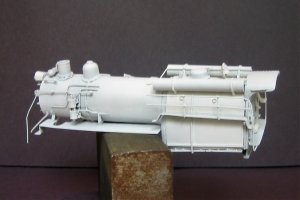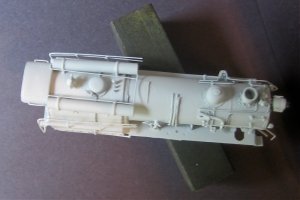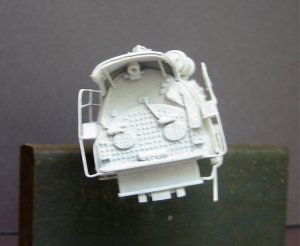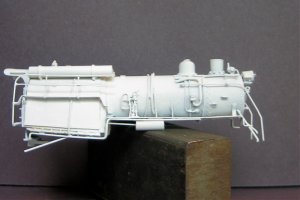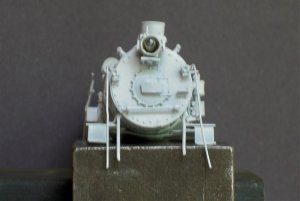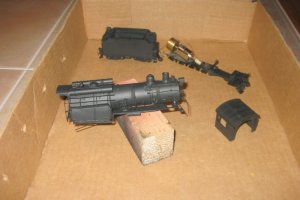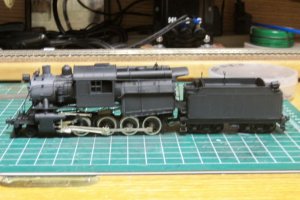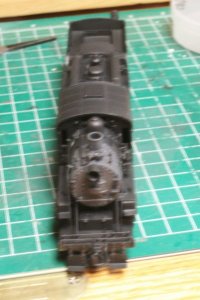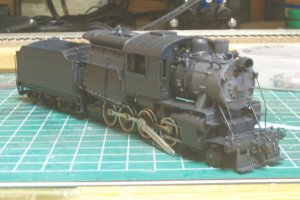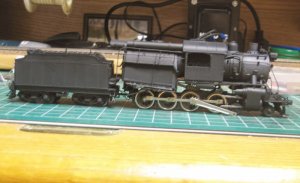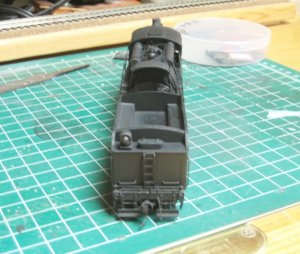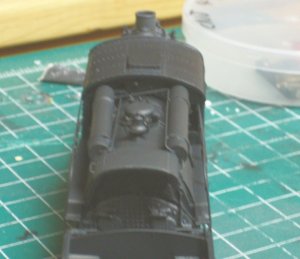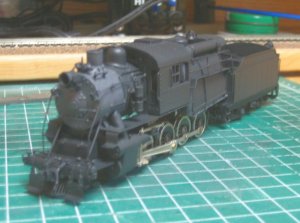:thumb:I just primed my CNJ 4-8-0 THAT I have bin working off and on with over the last few years. Now she is ready for paint . When my rivets (for the valve gear) and decals come in I'll finish up.
. When my rivets (for the valve gear) and decals come in I'll finish up.
CNJ K-1as
- Thread starter e-paw
- Start date
You are using an out of date browser. It may not display this or other websites correctly.
You should upgrade or use an alternative browser.
You should upgrade or use an alternative browser.
e-paw! All that beautiful work and you're going to put a lens-less, askew headlight with the bulb sticking out on this thing, please(!) assure me that this is not the case!
:mrgreen:No,no,no,:mrgreen: That bulb is just a temp. The boiler is brass that I rolled myself .The cab is a slightly modified cab from a New One 4-6-0 Camel back from the 60's (I think). The tender is a Bethlehem car works kit (not shown). the pilot is scratch built from brass ,along with most other detail parts. The drive is a heavily reworked Mantua frame with a Sigami can motor W/custom turned fly wheel. NWSL gears and Mantua drivers. The valve gear is scratch built (almost complete). Cylinders are modified Bowser. And last but not least the fire box is scratch built from brass and plastic with help from Bethlehem car works parts. I have other pics posted somewhere on this site.
Great looking work, e-paw, and much more ambitious than anything that I've done. I hope that you've got both a right-handed and a left-handed fireman lined up for that loco, though.  :-D I look forward to seeing some photos of the completed loco.
:-D I look forward to seeing some photos of the completed loco.
Wayne
Wayne
At one time 2 fireman were used. Somewhere around 1930 duplex stokers were installed. That small box on the foot plate under and between the fire box doors is it's cover.
Chessie6459
Gauge Oldtimer
I sometimes think I like late steam better. Then I realize I also like Atlantics, compound Mallets, at least the larger narrow gauge engines... and camelbacks. And I realize I can't make that generalization, as the exceptions are almost as numerous as the rule. I'm waiting to see this one assembled.
Lookin' real gooooodd...!!!
Can't wait to see'er finished.....
BTW...What was the logic behind the "camelback" design...?
Can't wait to see'er finished.....
BTW...What was the logic behind the "camelback" design...?
BTW...What was the logic behind the "camelback" design...?
These locos were found in the Northeast, and were typically on roads that hauled anthracite coal. Anthracite burns cleanly, but slowly, as it is very hard, and doesn't produce as much heat as bituminous coal.
To burn it efficiently in a steam locomotive required special design considerations. You can read a long version here. The short version is that because of the huge grate area, they decided moving the engineer ahead of the firebox would give him a better view, while the rear porch would suffice for the fireman.
These locos were found in the Northeast, and were typically on roads that hauled anthracite coal. Anthracite burns cleanly, but slowly, as it is very hard, and doesn't produce as much heat as bituminous coal.
Worth noting too is that the primary justfication for this design was that it burned culm, an anthracite waste product available on many coal-hauling roads at no cost. Thus, the financial savings was considerable.
Those modelers unfamiliar with the background history of these engines will often "fill" their tenders with a regular grade of lump coal. However, what was to be found in the prototype looked more like black dirt and is rarely modeled as such. To keep it from simply flying away, the coal pile was typcially hosed down before the loco left the yard facilities. I'd have to say that firing a camelback had to be about the filthiest job in the entire RR industry.
The closest I've seen anyone come to modeling the look of culm was a West Coast camelback fan who made his by putting a charcoal bricket through a blender set on high speed!
CNJ999


